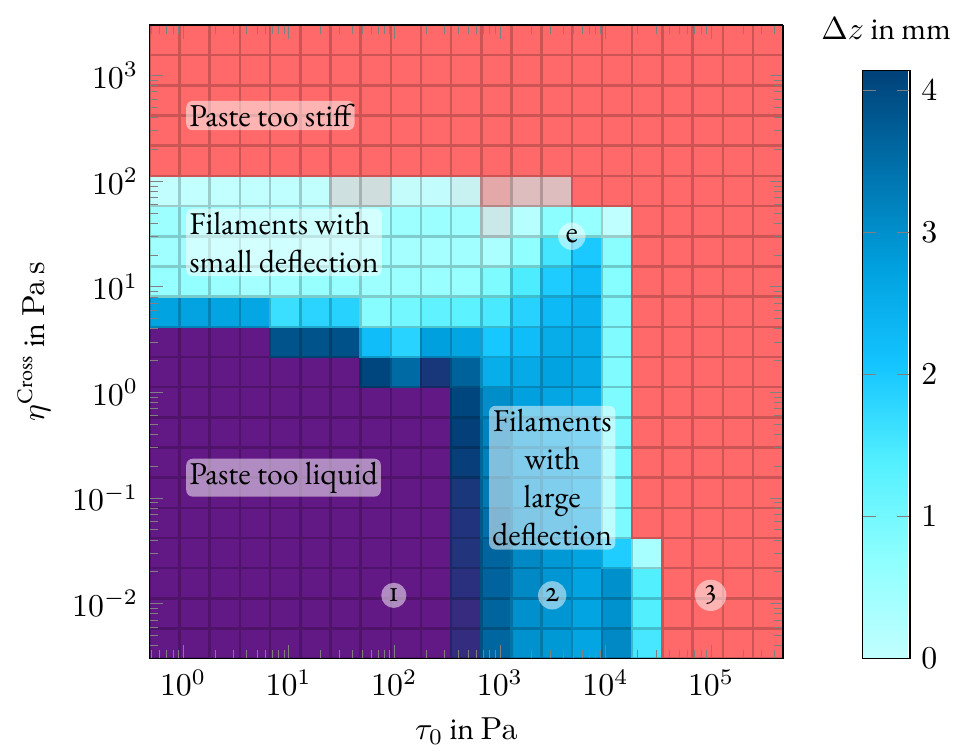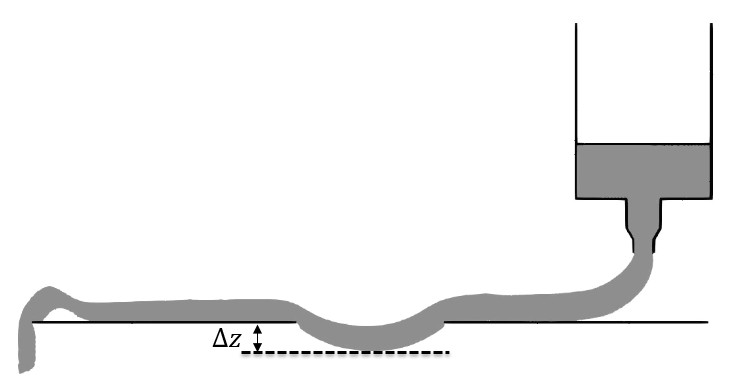Material extrusion-based additive manufacturing
Introduction
In Robocasting, a material extrusion-based additive manufacturing process, a paste is extruded from a nozzle to form continuous rod-like filaments that are printed on top of each other to create multilayer structures. The preferred design of these structures depends on the target application. In some cases (e.g. implants for biomedical applications) highly porous structures are desired while in other cases (e.g. housing walls) dense bodies are required without any porosity between the layers. The way in which new filament is deposited on the already printed structure is largely determined by the paste rheology. If the paste formulation – and thereby its rheology – is altered, the influence on the deposition behavior of the filaments is often unknown. While experiments are time consuming and expensive, numerical simulations enable efficient studies of the dependency of deposition characteristics on the paste rheology.
The task
In this particular example, we start from an experimentally measured rheology profile. Typical rheological properties for Robocasting pastes are the existence of a yield point and a shear-thinning behavior. A fluid with yield point shows a solid-to-liquid transition if the applied shear stress exceeds a certain yield stress. Afterwards, a shear-thinning behavior is observed, which means that the viscosity decreases with increasing shear rate. This dependency can be described by the Cross model. The flow of such a complex fluid is modelled using the Smoothed Particle Hydrodynamics method in SimPARTIX. The scenario we set out for investigation is a paste that is extruded from a printing nozzle which moves laterally (see figure). The extruded paste settles on a base plate with a gap into which the filament can deflect. The magnitude of this deflection is measured for a large number of combinations of yield stress and characteristic viscosity.
Results

The parametric study of yield stress and shear-thinning behavior can be summarized in a process map from which we can derive the influence of these rheological properties on the magnitude of deflection into the gap (see figure). Depending on the chosen combination of yield stress and characteristic viscosity, the filaments can (1) dissolve and fall into the gap (violet region), (2) successfully withstand gravitational forces and form a gap spanning filament with some deflection (blue region with color-coded deflection), or (3) be too stiff to form a continuous filament (red region). In this figure, the parameter combination marked by (e) corresponds to the experimentally measured rheology profile. Starting from this point, we see that changing the yield stress and/or the characteristic viscosity has an influence on the measured gap deflection. It turns out that sufficiently viscous pastes with a low yield point form filaments with a small deflection. Combinations of paste rheology properties from the light blue region can be used to create highly porous structure. In contrast, if the printed structure should have a vanishing porosity, then the paste viscosity must be small and the yield point rather large as indicated by the dark blue region. For the specific paste considered in this work it was possible to predict variations in the deposition behavior based on modifications of the paste rheology.
 Fraunhofer Institute for Mechanics of Materials IWM
Fraunhofer Institute for Mechanics of Materials IWM